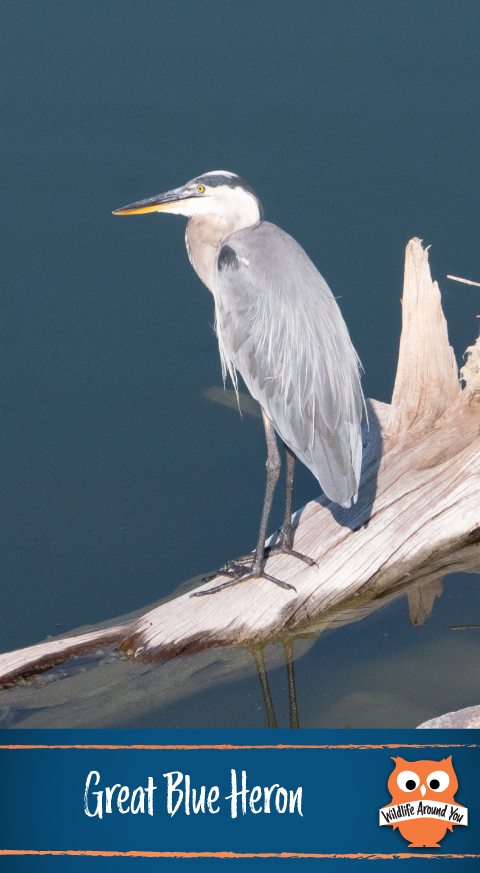Identification
Largest heron in N.America
38-53in tall, weighs 4.5-5.5 lbs, wingspan 65-79 inches
Blue-gray with a wide black stripe over the eye
Curls neck in an “s” unlike cranes
In-flight- the upper side is two-tone: pale on forewing darker on flight feathers
Neck tucked in during flight
Flys at 20-30mph
There is an all-white variety in Florida and the Caribbean that is slightly larger
Habitat
Southern Canada down to northern parts of S. America. Not in mountain regions
Found in saltwater, freshwater, marsh, coasts, riverbanks, lakes, etc.
Diet
Fish, frogs, mammals, reptiles, insects, etc. Wades into shallow water, stands still, and stalks prey. Strikes with a fast movement of the head. Mice make up a large part of the diet.
Nesting
Nest mainly in trees in colonies of 500+ individual nests.
Usually, nests are 20-60 ft above ground
Males arrive first and settle nesting site, brings nesting materials to female who constructs the nest
Nests can be 20in-4ft across and 3 ft deep
Clutch is 2-6 eggs with 1-2 broods a year.
Eggs are 2.5-3in long
nesting period is 49-81 days
Incubation is 27-29 days
Young are capable of flight in about 60 days
Average lifespan is 15 years
Fun Facts
They have specialized feathers on their chest that will grow continuously and fray into a powder. The powder can be used to clean off fish slime.
To keep cool on hot days, they will droop their wings and open their beak to increase evaporation. It’s called “gular fluttering” and looks like bird panting.
Their knees are up under their feathers. What we see function more like our ankles, and they walk on their toes.
Their long, S-shaped necks make it difficult for them to swallow long or large food whole. Some have been known to choke to death.

